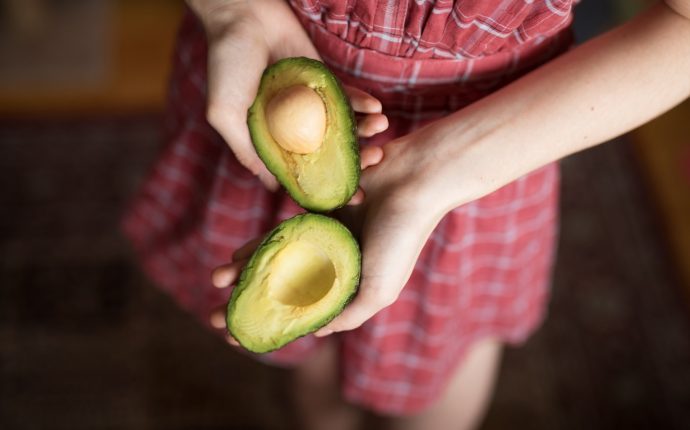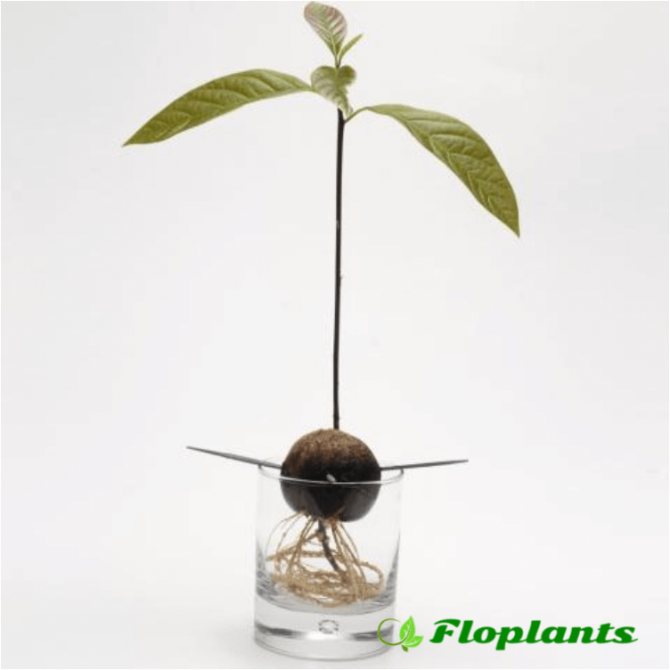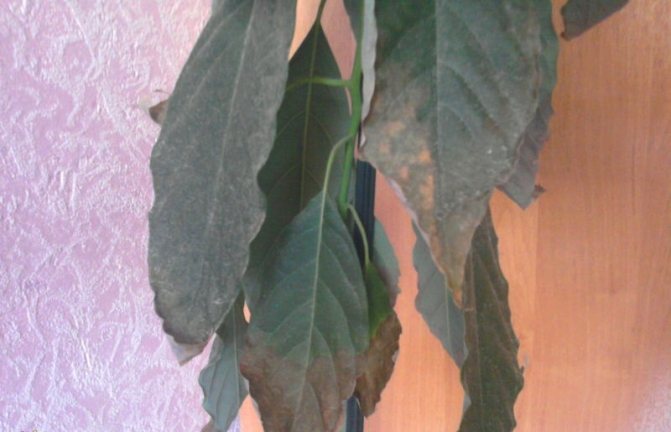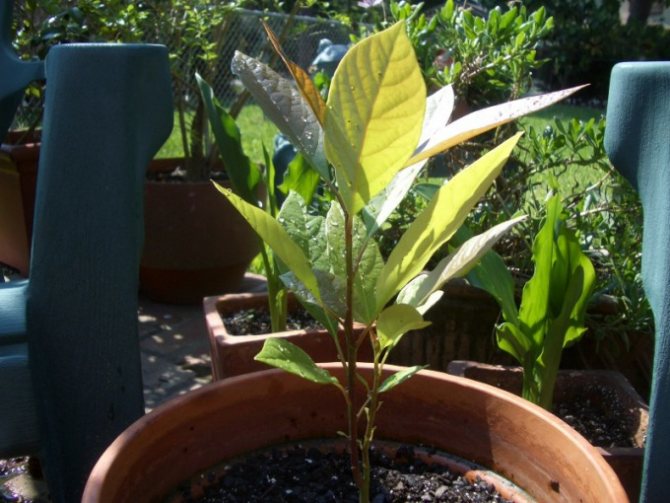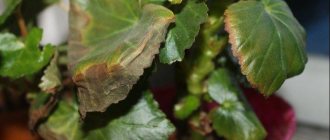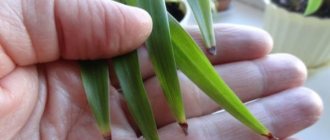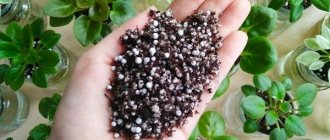Avocado is a delicate and capricious plant that needs to be properly cared for. Otherwise, the plant will begin to take on an unnatural look, leaves may fall off and further wilting.
It often happens that the avocado seems to be well looked after, and the plant grew healthy and strong for some time, and then, for some unknown reason, the leaves begin to dry out. What to do? Why is this happening? You need to know everything about this problem, otherwise you will not be able to help your beloved plant!
Perseus American (avocado), by its nature, grows quite large. If the plant is planted in a small pot that squeezes its roots and constricts it, some of the leaves will dry out and fall off from time to time. In this case, you need to transplant the avocado into a more spacious container in advance to prevent drying of the foliage and partial drying of the crown.
Avocado leaves can dry out for other reasons. This may be wrong, or rather, insufficient lighting, which especially occurs in winter, and improper watering, which should be "out of necessity" and necessarily moderate. The sun should fall on the plant as much as possible, and the water during irrigation should be at only room temperature. The soil in which the avocado grows should never even partially dry out, but it should not be very wet either.
The plant reacts strongly to the temperature in the room and especially to the humidity of the air. The temperature should not be too hot in summer and too cold in winter. But the humidity of the air surrounding the avocado should be high, only then the leaves of the plant will have saturated colors, and in no case will they dry. To do this, you need to place moss or expanded clay, which should always be wet, in the pan of the pot in which the avocado grows. Spray water regularly on top of the leaves and around the avocado.
In addition, the avocado needs to be fed periodically. The plant by nature has a rather impressive size, so it is natural that under artificial conditions many substances are not enough for it, this is what the leaves, which gradually begin to dry, may testify to.
If you do not follow these elementary rules for growing American Perseus, the plant may partially dry out, as evidenced by the drying out leaves. Usually, if the discomfort is not eliminated, the avocado grows sick and lethargic, its appearance and shape are poor, and gradually drying from the leaves will pass to the trunk itself, which will certainly lead to the death of the plant.
We have sown or planted most of the plants in the spring, and it seems that in the middle of summer you can already relax. But experienced gardeners know that July is the time to plant vegetables for a late harvest and the possibility of longer storage. This also applies to potatoes. Early summer harvest of potatoes is better to use quickly, it is not suitable for long-term storage. But the second crop of potatoes is exactly what is needed for winter and spring consumption.
Astrakhan tomatoes ripen remarkably lying on the ground, but this experience should not be repeated in the Moscow region. Our tomatoes need support, support, a garter.My neighbors use all kinds of pegs, garters, loops, pre-made plant supports, and mesh fencing. Each method of fixing a plant in an upright position has its own advantages and "side effects". I'll tell you how I place tomato bushes on trellises, and what comes out of it.
Bulgur with pumpkin is an everyday dish that is easy to cook in half an hour. Bulgur is boiled separately, the cooking time depends on the size of the grains - whole and coarse grinding for about 20 minutes, fine grinding for just a few minutes, sometimes the cereal is simply poured with boiling water, like couscous. While the groats are cooking, prepare the pumpkin in sour cream sauce, and then combine the ingredients. If you replace ghee with vegetable oil and sour cream with soy cream, then it can be included in the lean menu.
Flies are a sign of unsanitary conditions and carriers of infectious diseases that are dangerous for both humans and animals. People are constantly looking for ways to get rid of nasty insects. In this article we will tell you about the Zlobny TED brand, which specializes in fly protection and knows a lot about them. The manufacturer has developed a specialized line of preparations for getting rid of flying insects anywhere quickly, safely and at no extra cost.
Summer months are the time of flowering hydrangeas. This beautiful deciduous shrub smells luxuriously with flowers from June to September. Florists willingly use large inflorescences for wedding decors and bouquets. To admire the beauty of a flowering hydrangea bush in your garden, you should take care of the proper conditions for it. Unfortunately, some hydrangeas do not bloom from year to year, despite the care and efforts of gardeners. Why this happens, we will tell in the article.
Every summer resident knows that plants need nitrogen, phosphorus and potassium for full development. These are the three main macronutrients, the deficiency of which significantly affects the appearance and yield of plants, and in advanced cases can lead to their death. But at the same time, not everyone understands the importance of other macro- and microelements for plant health. And they are important not only by themselves, but also for the effective assimilation of the same nitrogen, phosphorus and potassium.
Garden strawberry, or strawberry, as we used to call it, is one of the earliest fragrant berries that summer gives us generously. How happy we are at this harvest! In order for the “berry boom” to repeat itself every year, we need to take care of the berry bushes in the summer (after the end of fruiting). The laying of flower buds, from which ovaries will form in spring and berries in summer, begins approximately 30 days after the end of fruiting.
Spicy pickled watermelon is a savory snack for fatty meat. Watermelons and watermelon peels have been pickled since time immemorial, but this process is time consuming and time consuming. According to my recipe, just cook a pickled watermelon in 10 minutes, and by the evening a spicy snack will be ready. Stored watermelon marinated with spices and chili in the refrigerator for several days. Be sure to keep the jar in the refrigerator, not only for the sake of safety - chilled this appetizer will just lick your fingers!
Among the variety of species and hybrids of philodendrons, there are many plants, both gigantic and compact. But not a single species competes in simplicity with the main modest - the blushing philodendron. True, his modesty does not apply to the appearance of the plant. Reddening stems and cuttings, huge leaves, long shoots that form, although very large, but also a strikingly graceful silhouette, look very elegant. The blushing philodendron requires only one thing - at least minimal maintenance.
Thick chickpea soup with vegetables and eggs is a simple recipe for a hearty first course based on oriental cuisine. Similar thick soups are prepared in India, Morocco, and the countries of Southeast Asia.The spices and seasonings set the tone - garlic, chili, ginger and a bouquet of spices, which can be collected to your liking. It is better to fry vegetables and spices in melted butter (ghee) or mix olive and butter in a saucepan, this, of course, is not the same, but it tastes similar.
Plum - well, who doesn't know her ?! She is loved by many gardeners. And all because it has an impressive list of varieties, surprises with excellent yields, pleases with its variety in terms of ripening and a huge choice of color, shape and taste of fruits. Yes, somewhere she feels better, somewhere worse, but almost not a single summer resident refuses the pleasure of growing it on her site. Today it can be found not only in the south, in the middle lane, but also in the Urals, in Siberia.
Many ornamental and fruit crops, in addition to drought-resistant ones, suffer from the scorching sun, and conifers in the winter-spring period suffer from the sun's rays, enhanced by reflection from the snow. In this article, we will tell you about a unique preparation for protecting plants from sunburn and drought - Sanshet Agrouspech. The problem is relevant for most regions of Russia. In February and early March, the sun's rays become more active, and the plants are not yet ready for new conditions.
"Each vegetable has its own age", and each plant has its own optimal time for planting. Anyone who has come across planting is well aware that the hot season for planting plants is spring and autumn. This is due to several factors: in the spring the plants have not yet started to grow rapidly, there is no sweltering heat and precipitation often falls. However, no matter how hard we try, circumstances often develop in such a way that planting has to be carried out at the very height of summer.
Chili con carne in Spanish means chili with meat. It is a Texan and Mexican dish, the main ingredients of which are chili peppers and chopped beef. In addition to the main products, there are onions, carrots, tomatoes, beans. This recipe makes chili and red lentils delicious! The dish is fiery, scorching, very satisfying and awesomely tasty! You can cook a large saucepan, put it in containers and freeze it for a delicious dinner for a whole week.
Cucumber is one of the most beloved garden crops of our summer residents. However, not all and not always gardeners manage to get a really good harvest. And although the cultivation of cucumbers requires regular attention and care, there is a little secret that will significantly increase their yield. It's about pinching cucumbers. For what, how and when to pinch cucumbers, we will tell in the article. An important point in the cultivation of cucumbers is their formation, or type of growth.
Avocados dry out if transplanted incorrectly
... In this case, we are talking about a transplant with a complete replacement of the soil, as a result of which the small roots of the flower's root system are disrupted. They participate in the water absorption process. The plant is transplanted with a complete replacement of the substrate only if the latter is not suitable or a lot of salts have accumulated in it from watering with hard water. In all other cases, the plant is transferred from a slightly larger pot (the diameter of the pot should be 2-3 cm larger than the previous one).
If the avocado is transplanted and its leaves dry, proceed as follows: the plant is covered with a greenhouse. It can be a regular plastic bag, but it shouldn't touch the leaves. Under the greenhouse, a high level of air humidity is maintained by spraying. Reduce watering to a minimum, as the soil dries out slowly under the greenhouse. Do not place the plant in direct sunlight, otherwise the leaves under the plastic will burn. The greenhouse is ventilated every day for a few minutes. It is recommended to add epin to the spraying water once a week.
The leaves dry out if the avocado is poured.
The plant does not like overdrying the soil, but overflow is destructive for it. Before the next watering, the substrate in the pot should dry out 3-5 cm, depending on the volume of the soil. Otherwise, the roots begin to rot. If the soil in the pot with avocado is constantly wet, you need to remove the earthen lump from the bowl, without violating its integrity, wrap it with newsprint and put the plant under diffused light. Thus, the earth will quickly dry out, excess moisture will go away. The roots are examined for rot. If there are rotten roots, they are carefully cut off, but they try not to violate the integrity of the earthen coma. The avocado is returned to the pot. Watering is reduced, once a week is watered with a root solution. They pay great attention to spraying, it is possible with epin.
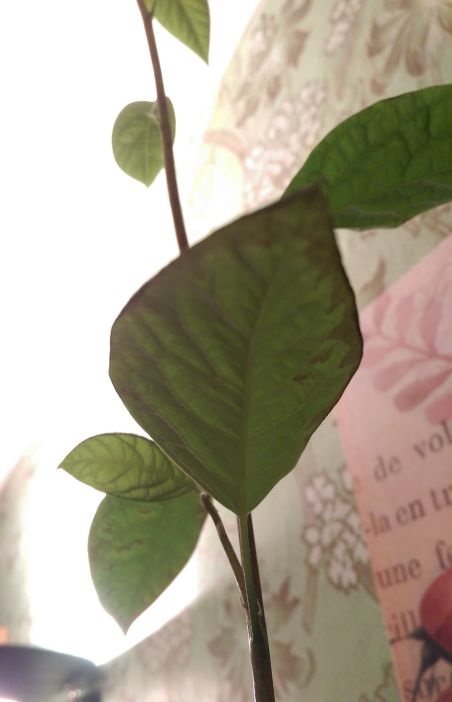
Why do avocado leaves dry when watering is normal?
This may be due to a lack of light or hypothermia of the plant. Avocado loves a lot of diffused light, and therefore it is placed near the windows on the south side of the house, on which there is a light tulle or slight shading. If there is little light, then the avocado dries. What to do? Move to a bright place, but without direct sunlight, spray abundantly.
If the plant gets under a draft or has been frostbitten and begins to dry, it is necessary to normalize the temperature of the content, ensure a normal level of illumination and be sure to place the flower under the greenhouse, as described above.
Why do avocado leaves dry
At home, avocado leaves dry and turn black for many different reasons. And the most basic and common reason is the inconsistency of the conditions of the avocado plants with what they need for normal growth and development. It often happens that people spread their own stereotypes and thoughts on plants about how and what should be done with them in order for them to feel good. But this does not always correspond to the true needs of the plant itself.
Finally, all plants, like humans, are also susceptible to disease and parasite attacks. And those of them, whose immunity has been weakened by inappropriate care, even more than others.
Therefore, it is most important to try to initially create the most suitable conditions for avocados and carry out a variety of preventive measures, than to deal with the consequences in the form of diseases and ailments.
Landing
Avocado is by no means a home plant, but it may well grow in indoor conditions, subject to certain requirements, however, it is very problematic to ensure that the Perseus blooms or even more, bears fruit, therefore, when choosing this plant as an indoor inhabitant, you should not be guided the desire to grow your own homemade fruit. In its homeland, in Mexico and Central America, it grows in forests with abundant moisture and reaches a height of 20-30 meters, while in indoor conditions the maximum that can be achieved from this plant is three meters, and more often it reaches only one meter, which allows it to be grown as an ornamental plant.
As a rule, in specialized stores, it is problematic to purchase an already formed plant, so you have to grow an avocado yourself. But this is not as difficult as it might seem at first glance.
For planting avocados, you need to choose only ripe seeds, green ones will not be able to germinate. When choosing the soil necessary for planting, it should be borne in mind that the mixture must be drained and fertile, these two conditions will help to fulfill the following proportions: two parts of sod land, one sand and one humus, or equal parts of leafy soil, peat and sand.When starting sowing, it is worth preparing fresh seeds, filling a container with one of the indicated substrates, placing a bone deep into the soil so that its top is level with the ground. After that, the container with the seed is covered with a polymer bag or a glass cap and placed in a bright place with a constant temperature of about 21 degrees, not forgetting to constantly ventilate and moisten the substrate. The process of emergence of sprouts can take 6 months, when the first signs of germination appear, the cap is removed. Already matured seedlings are distributed in separate pots.
Location and lighting
Avocados thrive best in a sufficient amount of indirect sunlight. That is, the room where the Perseus is located should be light, but the lighting should be made diffused. Avoid direct sunlight. Young plants are especially sensitive to the effects of direct sunlight, burns can even form on their trunk, so they should receive the sun in doses, gradually getting used to it. You can even paint the stem of the plant with white paint for extra precautions. In the winter season, the time of exposure to the sun should be maximized, or phytolamps should be used.
Pot size
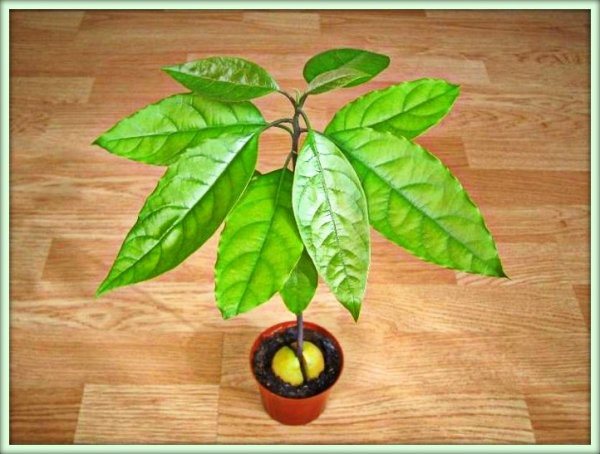

Dishes for growing avocados should be prepared spacious, but adequately correlated with the size of the plant, with the expectation that the avocado rapidly gains root mass during growth and, being constrained by the volume of the container, may lose some of its characteristics, such as bushiness and foliage color. Choosing a pot for avocado made from natural materials, you should pre-treat it with an antiseptic to avoid contamination of the plant with possible bacteria and pests. If the choice fell on a plastic pot, then, keeping in mind the previous point, it is better to purchase a previously unused one, especially since its cost is low. Whichever material is chosen for the pot, it is better if there are holes in it, since the avocado needs constant moisture.
The soil
It is better to choose a substrate for growing a plant such as an avocado carefully, without giving preference to the soil from the site, since it can contain pests that threaten not only avocados, but also other plants in the house. The following requirements are imposed on the soil: good ventilation ability, fertility, ability to retain moisture.
Examples for composing soil for an avocado might be: two pieces of land versus equal pieces of sand and humus; one piece of land, wet peat, humus and sand. When choosing a soil, it should be borne in mind that avocados do not tolerate acidic soil well, so a little alkali can be added to any of the proportions. Expanded clay and wet moss will help to increase humidity and improve the quality of ventilation.
Transfer
Young plants are transplanted annually, in the spring, from March to May. Already mature, matured plants are transplanted every two to three years. Expanded clay or sand is added to the soil. In the case when a complete transplant of an avocado is impossible, there is the following solution: its top layer is removed from the substrate, and the remaining mass is thoroughly washed with boiled water to wash out excess salts. The container for growing avocados should be selected taking into account the high growth rates of the plant.
Fertilization and feeding


Avocado should be fed between March and August; both mineral and organic fertilizers, as well as universal fertilizers for ornamental deciduous plants, are suitable. All of them should alternate with each other. Autumn and winter months are not used for feeding. During this period, about two or three additional fertilizing should be done monthly. Fertilizer is added both to the soil and sprayed onto the leaves. Feeding methods should also alternate.
Watering
In the summer and spring months, watering is necessary abundant regular, the soil should not be allowed to dry out. In autumn and winter, watering avocados is reduced to one time every two to three days, since it is not worth over-wetting the soil.
Temperature
Perseus is a very thermophilic tree; in spring and summer, a temperature of 25-30 degrees suits her, in winter, a favorable temperature is 18-20 degrees. If the temperature is lowered to 10-12 degrees, Perseus can shed its leaves.
Humidity
Avocados need moisture, the air in the room where the avocado is located must be constantly humidified. Frequent spraying of foliage is vital for him. During the heating season, it will be useful to use a humidifier. To constantly maintain the required level of humidity, you can place a pot of avocado on a pallet with expanded clay, pebbles or wet moss, but only so that the pot does not touch the water.
Pruning


Avocados can easily achieve a high decorative effect if you make the right effort. For example, you can collect several avocados in one pot and braid their trunks with a pigtail, and so that the tree does not grow with a so-called fishing rod, you should definitely pinch it. When seven to eight leaves appear, the tip is pinched, this will improve the stimulation of the growth of lateral shoots. Lateral shoots, in turn, are pinched when there are five to six leaves on them. Avocado pruning should be done in the spring, this event pursues not only sanitary purposes, but also helps to shape the crown of the tree in accordance with your desires.
Pests and diseases
Growing up at home, Perseus often suffers from such pests as scale insects, spider mites. You can try to cope with them by first increasing the humidity of the air, as well as removing insects by hand with a solution of soap, if this does not bring results, then the most recent control tool is insecticidal treatment. Powdery mildew also often infects avocados, seeing the first signs, it is necessary to treat the plant with a suitable fungicide. Due to the above diseases, the leaves of Persea turn yellow and fall off.
In many avocado diseases, not only insects are to blame, but also improperly organized care. Due to the fault of abundant or insufficient watering, cold water for irrigation, as well as drafts, the leaves can turn brown, dry out and fall off. Dry air is detrimental to this plant, with this lack of care, the leaves turn brown, first at the tips, and later completely. Insufficient lighting leads to discoloration of the leaves. In this case, the pot must be rearranged as close to the window as possible and provide additional light, not forgetting that when transferring from a dark place to the light, the plant must be taught gradually.
Bloom
In natural conditions, the height of the avocado trunk reaches from 10 to 20 meters. It has small, nondescript bisexual flowers that are collected in inflorescences.
In indoor conditions, the decorativeness of the avocado is doubtful, since it almost does not bloom, not to mention fruiting. Despite this, some avocado owners are getting decent results. Perseus blooms and even bears fruit. The avocado tree, of course, has the ability to self-pollinate, however, cross-pollination is required to harvest. Even growing in its homeland, having a decent height, and being completely covered with flowers, the avocado has a small, for its parameters, the number of fruits - about 150-200.
Reproduction
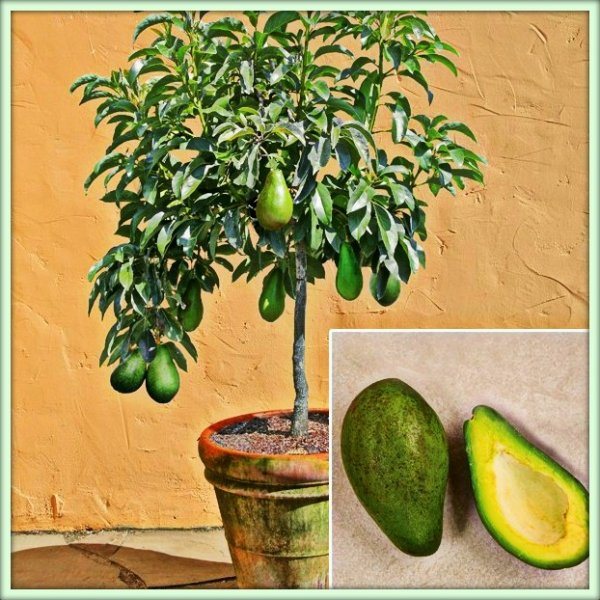

It will not be possible to propagate avocado cuttings, since they do not take root well. You can grow an avocado from a seed, but remember that only a mature seed will sprout.
It must be fixed with three wooden sticks, located at an angle of approximately 120 degrees, over a container of water, so that the blunt end of the stone only touches the water, but does not get wet, it is very important to constantly monitor the water level.Germination will take about a month, the sprout will appear from a crack in the bone. When a sufficient number of roots appears, the seed with the sprout is transplanted into the ground. There is another way, you need to put a bone on a surface that will be constantly wet, for example cotton wool or moss, as soon as it cracks, it is transplanted into the soil, later, after one or two weeks, a sprout will hatch.
Dormant period
The dormant period of avocados falls on October - March, the temperature should be kept around 18-20 degrees, watering should be tempered up to two or three times a week, no feeding is done, the lighting is good.
Virulence. Beneficial features
Naturally, the most valuable in the avocado plant is its fruit. It can be used for both food and cosmetic purposes. Only the pulp of the fruit is suitable for food, containing many vitamins and minerals, as well as monounsaturated fats that are well absorbed by the body. Eating avocado pulp reduces the risk of heart disease, helps cleanse the blood of bad cholesterol, protects the body from free radicals, and improves immunity. Nutritionists recommend the use of this product for diabetes mellitus, diseases of the gastrointestinal tract. The avocado fruit also has a beneficial effect on the nervous system and is an excellent source of protein. In cosmetology, its range of application is quite wide, only not only pulp is used, but also oil, which contains up to 20-30% in one fruit. An example is the preparation of various masks for the face, body and hair. The oil has a bactericidal and wound healing effect, which is used for various skin diseases.
But not all parts of the trigger plants are beneficial. The leaves of the avocado plant contain toxic substances that can significantly increase the allergy in a person prone to allergies, oddly enough, to latex, as well as citrus fruits, avocados, by the way, are referred to as fruits. For animals, these substances are more dangerous. Do not try to taste the fruit bone. Avocado juice is highly susceptible to infection by the dangerous bacterium Listeria Monocytogenes, which can cause an infectious disease with a number of unpleasant symptoms. Also, you can not eat the fruit in case of individual intolerance. The poison contained in the leaves, when ingested, can cause disturbances in the digestive system.
Unsuitable growing conditions
The main problem when trying to grow tropical or subtropical plants at home is the discrepancy between natural and indoor conditions. Indeed, in nature, these plants are adapted to a very specific combination of temperatures, humidity and the amount of sunlight. In addition, avocados, being quite large trees, form a considerable root system, which requires very spacious containers. Not every home has room for large and deep pots. Avocados are also distinguished by intensive growth rates, especially in the early years. This must also be taken into account when growing this tropical exotic.
So, the first and most common reason why avocados dry, turn black and fall off the leaves is the wrong size container for planting. The pot may not be too wide, but always deep, like for palms. After all, the root of an avocado from the very first months of life begins to purposefully grow downward. The main stem also quickly begins to develop upward. As soon as the root reaches the bottom of the pot, it will have nowhere to develop, it will begin to bend to the sides. As a result, the leaves will begin to dry and fall off. In principle, there is nothing wrong with this, since new leaves will immediately begin to form in their place with appropriate care.But you have to come to terms with the fact that for some time the avocado will not look quite decorative.
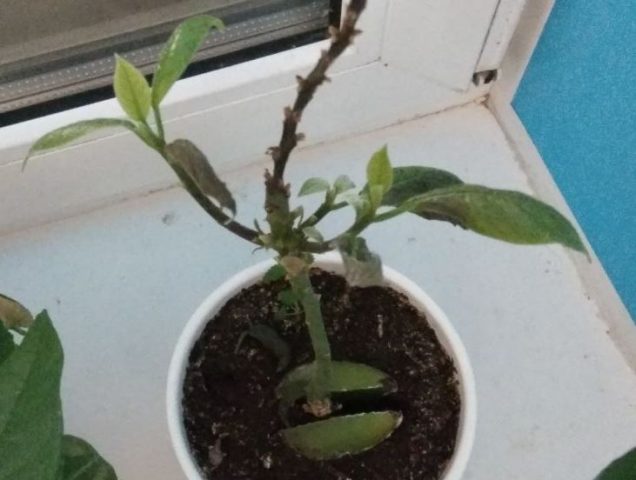

Attention! If you look closely, the rudiments of new leaves appear in the axils of the buds even when the old leaves dry.
Therefore, when transplanting in the first year, it is better to prepare a narrow but deep pot. And then increase its depth every year by 10-15 cm.
Avocado does not like extreme heat or frost. Optimal conditions for growth are around + 18-20 ° C. In winter, it is desirable to lower the temperature with a simultaneous increase in daylight hours and its intensity. After all, avocado leaves dry around the edges mainly due to low humidity in combination with high temperatures around. It is necessary to either increase the humidity of the air or lower its temperature.
And from a lack of light, which is not uncommon in winter, avocado leaves can turn pale, lose their bright and juicy color, and even brown spots may appear on them. Moreover, under natural conditions, avocados grow in the bright sun, and they need to soak up the sun for at least a few hours a day.
In nature
The birthplace of the avocado, or Persea Americana, is Mexico, Guatemala and the Antilles. Perseus American is grown in other countries: in tropical and subtropical regions of Brazil, Israel, New Zealand, USA, South Africa. Avocados belong to the Laurel family, the genus Perseus. The genus includes about 150 species of evergreen tall trees and shrubs. Among the trees, giants up to 30 meters high are not uncommon. Their fruits are pear-shaped or rounded drupes with fleshy pulp. The common name - "alligator pear", very accurately describes the appearance of pear-shaped or oval fruits. The quality and quantity of pulp in them can be different. Those fruits that are sold in our stores belong to one of the types of avocado, Perseus American. Their tender flesh is light cream, yellow or greenish in color. This healthy, tasty and high-calorie pulp contains about 30% oil. Avocados are considered the nutritional champion among fruits. Its calorie content is 210 kcal.
Three varieties of avocado are cultivated. These are the Mexican (more cold-resistant, thin-skinned, aniseed leaves), Guatemalan (large-fruited, thick-skinned, more thermophilic) and West Indian varieties (grown in tropical climates, the most demanding). Their varieties and hybrids are widespread.
American Perseus is a very interesting tree. In nature, it grows up to 20 m tall. The yield of fruits from each such tree is decent (150-200 kg), although only a part of the flowers are pollinated. This is due to the fact that small flowers collected in bunches have one feature. Their anthers and stigmas mature at different times.
Read also: How many kilograms of potatoes in a 10 liter bucket
Improper care
For avocados, not only timely and suitable watering in terms of volume is very important, but also the quality of the water used in this. Water for irrigation should be taken purified (filtered) without excess salts and only temperatures above room temperature. Leaves can dry out and turn black from watering with cold water. And the amount of water used for irrigation is highly dependent on lighting and ambient temperature. In summer, at high temperatures, the soil in a pot of avocado should practically not dry out. It is permissible to dry out only the uppermost layer of 2-3 cm. But in winter, when kept in conditions of low temperatures, watering can be significantly reduced. But, if it is not possible to reduce the temperature of the content in winter, then watering should be quite abundant, a little less than in summer. But if you overdo it with watering, then the avocado leaves also turn black. Indeed, in winter, much less light falls on them, which means that the need for water also decreases.
In winter, it is better to pay more attention to increasing the humidity of the surrounding air, rather than the soil in the pot. To do this, you can spray the crown with warm water several times a day or place sphagnum moss in a pan, constantly moistening it. A good option is to place a group of plants with similar humidity requirements together and close to a humidifier.
Advice! In winter, additional lighting will not hurt the avocado, as, indeed, many other tropical plants. It is desirable that daylight hours last at least 12 hours.
All these attempts to fix the situation do not always lead to the desired result, and avocados may continue to dry and blacken the leaves. Sometimes untimely and incorrect transplantation leads to such a result.
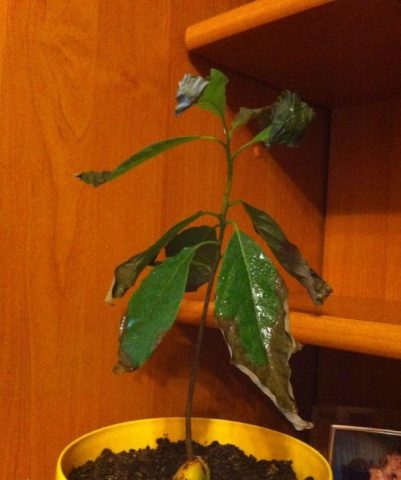

It is necessary to transplant the plant very carefully, trying to completely preserve the earthen lump on the roots. The soil for adding to the pot is prepared from equal parts of humus, garden soil and sand, it is advisable to add sphagnum. Peat is not very desirable as avocados are intolerant of acidic soils and are very easy to add in excess.
The procedure should be timed to coincide with the spring period, when all processes occur an order of magnitude faster. But it so happens that everything is done correctly, but the leaves still could not be saved. If this happened as a result of a transplant, then you should not despair. It is necessary regularly (1-2 times a week) to spray the bare trunk with Epin or another immunostimulant, and the leaves will soon reappear, greener and more beautiful than before.
In order for the avocado to gain strength for the formation and growth of new leaves, it must be additionally fed at such moments. But there may be some danger in top dressing. Indeed, there is relatively little soil in a pot for a voluminous root system of a tree and concentrated fertilizers can simply burn its thin young roots. Therefore, for feeding, you can use any complex fertilizers for indoor or decorative leafy plants, but it is better to dilute them with half the concentration than indicated in the instructions. Optimally, after a week or two, repeat the feeding procedure.
Pot or soil?
Those avocados that have been planted in the soil in moderately warm greenhouses or conservatories are more leafy. Their trunk stays with leaves longer. In the ground, avocado grown from seed blooms in the 6th - 8th year, grafted - earlier, in the 4th year. The indoor tree growing in pots and tubs rarely blooms. Planting in the ground also affects the height of the avocado. In the ground, the tree is much stronger and taller, often five meters (if the ceiling height allows). In pots, its height does not exceed 2 - 2.5 meters. An adult tall tree with a branched crown looks good even when it has a bare stem.
![]()
![]()
Good afternoon everyone!
Please help me figure out the avocado! The leaves turned yellow and began to fall off. At the same time, new shoots grow on the top in good condition, do not fade or shrink. I began to consume dramatically less moisture. I removed it from the windowsill, it costs about a meter from the battery, 1-1.5 m. I transplanted it into a pot about 3 months ago. This one with automatic irrigation. I bought fertilizer for citrus fruits, there was no particular improvement.
Can you please tell me how to fix the situation? If the avocado drops all the leaves, will they appear in the spring? Or is it already like this forever?
Avocado diseases
In favorable conditions, avocados are rarely affected by various diseases and parasites. But with a decrease in immunity when kept in conditions not most suitable for it, the plant can be attacked by pests and diseases.
The most common diseases in indoor conditions, which arise primarily from improper watering, are various fungal infections.
Powdery mildew appears as a whitish bloom on the leaves.Moreover, it is the lower leaves that are the first to dry in the pot, turn yellow and fall off. And new leaves already initially climb with all sorts of deformations. The disease can quickly spread to neighboring plants, so the diseased specimen should be isolated from others as soon as possible.
To cope with powdery mildew, the leaves are removed completely and burned. The upper part of the soil is replaced with fresh soil, and the leaves and branches themselves are sprayed with a solution of soap and soda or potassium permanganate. You can also sprinkle and spray the avocado with one of the following fungicides: Strobi, Topaz, Tiovitjet.
An equally dangerous problem is the defeat of avocados by root rot and late blight. The first disease most often appears due to poor drainage and waterlogging of the soil. Phytophthora is easily tolerated with water, tools, clothing. Both of these diseases are reflected primarily in the condition of the avocado leaves. They dry, turn black, become covered with spots of different shades and configurations.
Double treatment of the soil and all green parts of the plant with fungicides Ridomil-Gold or Fitolavin will help to cope with diseases.
Avocado diseases
Common avocado disease - falling leaves
... If they fall from below, the problem most often lies in root rot or waterlogged soil.
Before falling off, in this case, the leaves often turn moldy or turn black. It is necessary to try to reduce the moisture content of the ground in which the plant is located.
Another reason - powdery mildew
... This disease is a fungus. At the same time, the plant becomes covered with a snow-white and mold-like bloom. At first, the lower leaves turn yellow and fall off, and the new ones grow deformed. Then the plant gradually dies.
Powdery mildew appears from ignoring the rules of watering, that is, with waterlogging and insufficient watering. There is a high risk of disease if the avocado is placed on the balcony during the rainy season, provided that the weather is cool.
Do not forget that the disease is easily transmitted from any infected plant.
Here's what to do with powdery mildew
:
- replace the top layer of the earth;
- cut off damaged leaves;
- spray the leaves and the trunk with a medicinal preparation (manganese, soda-soap, mustard solution, etc.).
If the powdery mildew disappeared on its own, it does not mean that it will no longer appear. Be sure to treat the plant so that the signs of the fungus do not reappear.
Falling of the upper leaves
usually caused by their dryness. Even if good watering is ensured, but the tops still turn yellow and fall off, the reason lies in insufficient watering. Moreover, not only the ground itself, but also the entire surface of the plant should be watered. Remember to wash the leaves and trunk.
Sometimes the color of the leaves seems lifeless
... The leaves do not radically change color, but only lose it. The problem is the lack of light. Take care of good natural light.
Pests
Under indoor conditions, with increased dry air, almost all plants can be attacked by spider mites. If the tips of the leaves dry on the tips of the leaves and at first a barely noticeable speck appears on them, then the first step is to check their back side with a magnifying glass for small black dots.
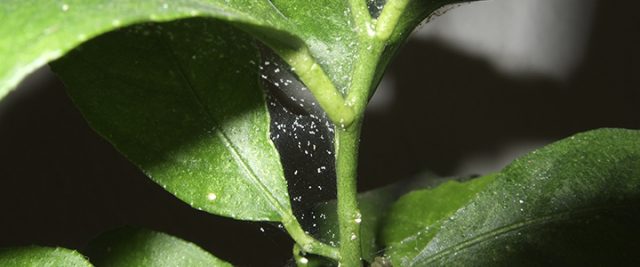

With significant damage to plants on the leaves, you can see even the smallest cobweb that covers their cuttings. If there are few pests, then a simple washing of the leaves with warm water and potassium soap will help to remove them. When a cobweb appears, the avocado should be sprayed with Fitoverm, Vermitek or Aktofit at least 2-3 times with an interval between treatments of 4-5 days.
Scabbards are a frequent guest on avocado. These tiny pests live primarily on the stems of plants or on the lower veins of leaves.They suck the juice from the green part of the avocado and the leaves turn yellow and dry. The scabbard can be removed by hand using a solution of tar soap.
How do temperatures affect the plant?
A plant can also get sick with an incorrectly selected temperature regime.
If you do not spoil the avocado with warmth
, the leaves will shrink. They will curl up, but are unlikely to turn yellow. Perhaps their color will become darker. This position of the leaves is a sign of the "dying" state of the avocado. In cold weather, growth slows down, and the life of the plant gradually fades away.
Even if the leaves are already curled up, the avocado can still be saved. To do this, you need to adjust the temperature in the room so that it turns out to be optimal (at least fifteen degrees). You should not try to heat the plant as much as possible, because it will suffer greatly from a sharp drop. It is better to increase the temperature gradually.
Never place thermal appliances next to the avocado. Even if you use them to warm the room, keep them away from the plant.
Too high temperatures
also does not have the best effect on avocados. Especially if the air is dry. Heat is a provocateur of yellowing of leaves and their dryness. From it, they become stiffer and smaller in size, that is, they shrink.
The best resuscitation method
- gradual decrease in temperature and moderate watering. Do not try to flood the ground if the temperature is not reduced - you will achieve the opposite effect.
Avocados are often attacked by two pests - scale insect and spider mite
... The action is the same for them.
In order to destroy the scabbard
soap solution is effective. It is necessary to dissolve tar soap in water and clean the leaves with a mixture.
To combat spider mites
avermecatines are required. These drugs include Vermittek and Aktofit.
Preventive actions
The most basic preventive measure for keeping avocados healthy is placing the plant in the most favorable conditions for its development. It:
- abundance of sunlight and 12-hour daylight hours;
- moderately warm temperatures throughout the year;
- moderately abundant watering with warm purified water;
- sufficient air humidity.
The latter conditions are especially important for the prevention of pests and diseases.
Why does avocado turn black?
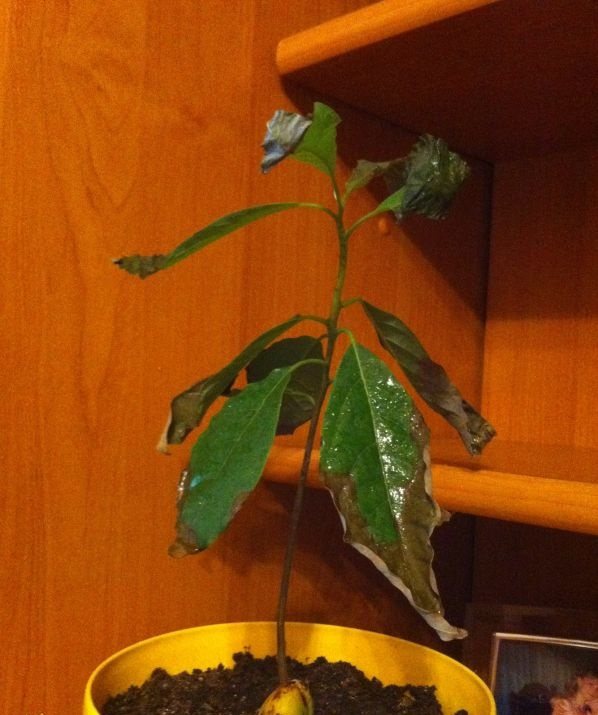

Avocado turns black when its roots start to rot
... This is the result of regular waterlogging of the flower or too much pot volume. In the latter case, the roots do not occupy the entire area provided to them, the substrate dries out very slowly. From an excess of moisture, the roots rot. What are they doing? Avocados are placed under a greenhouse (described above), watering is very rare. If the lump to the pot is very wet, it is carefully removed, without violating the integrity, wrapped in paper and dried in this way for 2-3 days.
Leaves turn black if avocados don't like growing conditions
... This may be a lack of light, low air humidity, or the plant's pot is too small. The last problem is easy to identify. It is necessary to remove the soil from the pot and if the lump is tightly braided with roots, a transplant is performed. The pot should be larger than the previous one by only 2-3 cm in diameter.
Leaves dry and turn black if the avocado is close to the battery in winter. The air there is very dry, and therefore spraying is carried out. Ideally - 5 times a day, watered as the soil dries.
Our grandmothers, growing garden strawberries, or strawberries, as we used to call them, were not particularly worried about mulching. But today this agricultural practice has become fundamental in achieving high quality berries and reducing crop losses. Someone might say that it is troublesome. But practice shows that labor costs in this case are repaid a hundredfold. In this article, we invite you to get acquainted with the nine best materials for mulching garden strawberries.
Succulents are very diverse.Despite the fact that “babies” have always been considered more fashionable, the assortment of succulents that can be used to decorate a modern interior is worth taking a closer look at. After all, colors, sizes, patterning, degree of prickle, influence on the interior are just a few of the parameters by which you can choose them. In this article, we will tell you about the five most fashionable succulents that amazingly transform modern interiors.
Mint was used by the Egyptians as early as 1.5 thousand years BC. It has a strong aroma due to the high content of various essential oils with high volatility. Today mint is used in medicine, perfumery, cosmetology, winemaking, cooking, ornamental gardening, and the confectionery industry. In this article, we will consider the most interesting varieties of mint, and also talk about the features of growing this plant in the open field.
People began to grow crocuses as early as 500 years before the advent of our era. Although the presence of these flowers in the garden is fleeting, we always look forward to the return of the heralds of spring next year. Crocuses are one of the earliest primroses that bloom as soon as the snow melts. However, flowering times may vary depending on species and varieties. This article focuses on the earliest crocus varieties that bloom in late March and early April.
Cabbage soup from early young cabbage on beef broth - hearty, aromatic and easy to prepare. In this recipe, you will learn how to cook a delicious beef broth and cook light cabbage soup in this broth. Early cabbage cooks quickly, so it is put into the pot at the same time as the rest of the vegetables, unlike fall cabbage, which takes a little longer to cook. Ready-made cabbage soup can be stored in the refrigerator for several days. The present cabbage soup is tastier than the freshly cooked one.
Looking at the variety of tomato varieties, it is difficult not to get confused - the choice is very wide today. Even experienced gardeners are sometimes confused by it! However, it is not so difficult to understand the basics of selecting varieties "for yourself". The main thing is to delve into the peculiarities of culture and start experimenting. One of the easiest tomato groups to grow are varieties and hybrids with limited growth. They have always been appreciated by those gardeners who do not have a lot of energy and time to care for the beds.
Once very popular under the name of indoor nettles, and then forgotten by everyone, Coleus today are one of the brightest garden and indoor plants. They are not in vain considered stars of the first magnitude for those who are looking primarily for non-standard colors. Easy to grow, but not so undemanding to suit everyone, Coleus require constant monitoring. But if you take care of them, the bushes of velvety unique leaves will easily outshine any competitor.
Salmon ridge baked in Provencal herbs is a "supplier" of tasty pieces of fish pulp for a light salad with fresh leaves of wild garlic. Champignons are lightly fried in olive oil and then poured with apple cider vinegar. These mushrooms are tastier than regular pickled mushrooms and are better for baked fish. Ramson and fresh dill get along well in one salad, emphasizing the aroma of each other. The garlic pungency of wild garlic will saturate both the flesh of the salmon and the pieces of mushrooms.
A coniferous tree or shrub on the site is always great, and many conifers are even better. Emerald needles of various shades adorn the garden at any time of the year, and phytoncides and essential oils secreted by plants not only flavor, but also make the air cleaner. As a rule, most of the zoned adult conifers are considered to be very unpretentious trees and shrubs. But young seedlings are much more capricious and require competent care and attention.
Sakura is most often associated with Japan and its culture.Picnics under the shade of flowering trees have long become an integral part of the welcome of spring in the Land of the Rising Sun. The financial and academic year begins here on April 1, when the magnificent cherry blossoms are in full bloom. Therefore, many significant moments in the life of the Japanese pass under the sign of their flowering. But sakura grows well in cooler regions - certain species can be successfully grown even in Siberia.
I am very interested in analyzing how the tastes and addictions of people to certain foods have changed over the centuries. What was once considered tasty and was an object of trade lost its value over time and, conversely, new fruit crops conquered their markets. Quince has been cultivated for over 4 thousand years! And even in the 1st century BC. e. about 6 varieties of quince were known, and even then methods of its reproduction and cultivation were described.
Delight your family members and make Easter egg themed cottage cheese cookies! Your kids will be happy to take part in the process - they will sift the flour, combine all the necessary ingredients, knead the dough and cut out intricate figures. Then they will watch with admiration how the pieces of dough turn into real Easter eggs, and then they will eat them with the same enthusiasm with milk or tea. How to make such an original cookie for Easter, read our step-by-step recipe!
There are not so many decorative leafy pets among tuberous crops. And Caladium is a true star among the variegated inhabitants of interiors. Not everyone can decide to start a Caladium. This plant is demanding, and first of all - to care. But still, rumors about the extraordinary capriciousness of the Caladiums never justify. Care and attention will avoid any difficulty in growing caladiums. And a plant can almost always forgive small mistakes.
We have prepared a hearty, incredibly appetizing and simply elementary dish for you today. This gravy is one hundred percent universal, as it goes with every side dish: vegetables, pasta, or whatever. Gravy with chicken and mushrooms will save you in moments when there is no time or you don't want to think too much about what to cook. Grab your favorite side dish (you can do this ahead of time to keep everything hot), add the gravy and lunch is ready! A real lifesaver.
Among the many different varieties of these most popular vegetables, we will tell you about three that are distinguished by excellent taste and relatively unpretentious growing conditions. Characteristics of the varieties of eggplants "Almaz", "Black handsome" and "Valentina". All eggplants are medium-firm. For Almaz it is greenish, while for the other two it is yellowish-white. They are united by good germination and excellent productivity, but at different times. Skin color and shape are different for everyone.
To avoid problems
, you need to be able to recognize their cause and know some ways to get rid of them.
The main reasons for drying
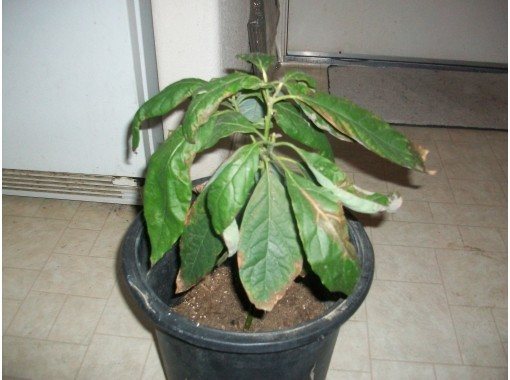

Why do avocado leaf tips dry? Usually, leaves are dried first
... This is very dangerous for the avocado, because gradually it can die.
What to do if avocado leaves dry? Dryness provocateurs
- low air humidity and improper watering. To eliminate the dryness of the air, you should thoroughly ventilate the room. This is best done when the weather is wet.
Do not forget
move the plant while airing. It is undesirable for him to experience the influence of wind and temperature changes.
Another way to increase humidity
- take a regular container of water and place it near the pot.
Avocados do not always easily extract moisture from the air, so you can make it easier for him. For this wipe both the leaves and the trunk with a wet cloth
.
The reason for the dryness of this plant can also be incorrectly selected fertilizers. If chemistry is present in the top dressing, it will damage the roots.Try to use the most natural formulations for fertilization.
What to do if avocado leaves turn black and dry
Avocado has enjoyed considerable popularity in recent years as a houseplant, as it is fairly easy to grow from an ordinary seed. But in its natural habitat, the avocado looks like a huge tree and without much enthusiasm for living in a room. Therefore, many lovers of growing tropical trees are faced with the fact that the leaves of avocados dry or ugly spots are found on them, and soon the plants may completely remain with a bare stem. All possible causes of this phenomenon, as well as ways to eliminate them, will be listed below.
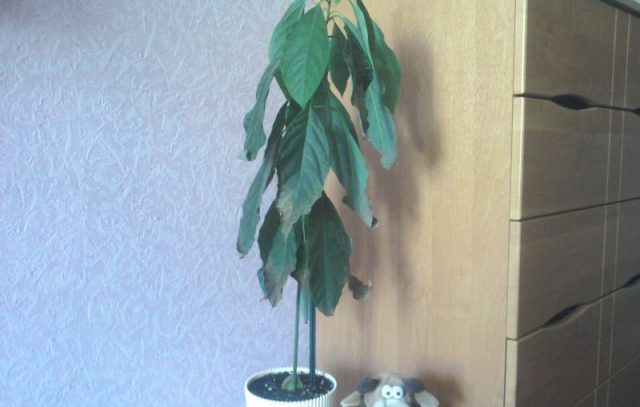

What needs attention
Many of these diseases progress extremely rapidly. therefore pay due attention to the plant
to avoid harmful consequences.
The sooner the problem is identified, the better the measures taken will help.
If you find an error, please select a piece of text and press Ctrl + Enter
.
Avocados dry out if transplanted incorrectly
... In this case, we are talking about a transplant with a complete replacement of the soil, as a result of which the small roots of the flower's root system are disrupted. They participate in the water absorption process. The plant is transplanted with a complete replacement of the substrate only if the latter is not suitable or a lot of salts have accumulated in it from watering with hard water. In all other cases, the plant is transferred from a slightly larger pot (the diameter of the pot should be 2-3 cm larger than the previous one).
If the avocado is transplanted and its leaves dry, proceed as follows: the plant is covered with a greenhouse. It can be a regular plastic bag, but it shouldn't touch the leaves. Under the greenhouse, a high level of air humidity is maintained by spraying. Reduce watering to a minimum, as the soil dries out slowly under the greenhouse. Do not place the plant in direct sunlight, otherwise the leaves under the plastic will burn. The greenhouse is ventilated every day for a few minutes. It is recommended to add epin to the spraying water once a week.
The leaves dry out if the avocado is poured.
The plant does not like overdrying the soil, but overflow is destructive for it. Before the next watering, the substrate in the pot should dry out by 3-5 cm, depending on the volume of the soil. Otherwise, the roots begin to rot. If the soil in the pot with avocado is constantly wet, you need to remove the earthen lump from the bowl, without violating its integrity, wrap it with newsprint and put the plant under diffused light. Thus, the earth will quickly dry out, excess moisture will go away. The roots are examined for rot. If there are rotten roots, they are carefully cut off, but they try not to violate the integrity of the earthen coma. The avocado is returned to the pot. Watering is reduced, once a week is watered with a root solution. They pay great attention to spraying, it is possible with epin.
Why do avocado leaves dry when watering is normal?
This may be due to a lack of light or hypothermia of the plant. Avocado loves a lot of diffused light, and therefore it is placed near the windows on the south side of the house, on which there is a light tulle or slight shading. If there is little light, then the avocado dries. What to do? Move to a bright place, but without direct sunlight, spray abundantly.
If the plant gets under a draft or has been frostbitten and begins to dry, it is necessary to normalize the temperature of the content, ensure a normal level of illumination and be sure to place the flower under the greenhouse, as described above.
Do I need pruning
Since the tree quickly stretches in height, it is periodically necessary to pinch it, starting from the moment when there are at least 8 leaves on the tree. Initially, we do this only at the top of the head, so that lateral branches appear for a lush, uniform crown, and then, as the branches grow, they too.
Thin weak stems and branches are a sign of insufficient pinching, but the plant will not like too much, the tree may simply stop or slow down its growth. Prune the plant in early spring for fast and even growth.
Three ways to slice an avocado
Of course, you can do without special tools and cut the avocado with an ordinary kitchen knife.
Slicing
Take a peeled avocado. Cut lengthwise on both sides, bypassing the bone. Grasp the fruit from different sides and turn the halves towards each other. As a result, the bone remains in one of the halves, it can be removed with your hands or gently pry with a knife. Place one half of the avocado in the palm of your hand, peel side down, cut lengthwise into wedges. It is necessary to cut deeply, to the very rind, but without cutting through it. Take a spoon and gently, from the end of the fruit, insert the spoon until the peel towards the opposite end. As a result, your slices will fall out of the peel. A little training and everything will work out.


Dicing
The beginning of the process is similar. Only after slicing lengthways, cut the pulp and across. Spoon the avocado slices with a spoon to separate them from the rind. It's a little easier here, as less care is required.
Method three, specific: cutting into circles
Peel the fruit. It separates from a ripe fruit very easily. Start slicing the peeled avocado into circles. In the area, the bones will have to be cut into half rings.
The main reasons for drying


Why do avocado leaf tips dry? Usually, leaves are dried first... This is very dangerous for the avocado, because gradually it can die.
What to do if avocado leaves dry? Dryness provocateurs - low air humidity and improper watering. To eliminate dry air, you should thoroughly ventilate the room. This is best done when the weather is wet.
Do not forget move the plant while airing. It is undesirable for him to experience the influence of wind and temperature changes.
Another way to increase humidity - take a regular container of water and place it near the pot.
Avocados do not always easily extract moisture from the air, so you can make it easier for him. For this wipe both the leaves and the trunk with a wet cloth.
Avocado
| I ask for help. I planted an avocado seed for fun. Sprouted, but now for some reason the leaves began to dry, but the trunk is good. Tell me how to care for such a plant? Read completely |
| +4 Register and get an opportunity to rate materials, communicate in comments and much more! ’)"> Register and get an opportunity to rate materials, communicate in comments and much more! ’)"> | foxju | 08.02.2010 | 173 | 3 |
| All recipes |
Avocado slicer knife requirement kitchen helper or
An avocado knife should be sharp and comfortable. Black iron tools should not be used for cutting. They absorb odors and transfer them to products afterwards. In addition, black marks remain on the pulp, caused by oxidation of the metal from contact with the acid of the fruit.
It is better to purchase a special plastic tool. It provides options for safely pitting, peeling and cutting the flesh into pieces. Knives made of ceramic or stainless steel will do. These devices do not absorb odors; from contact with them, the fruit pulp does not change its qualities.

